On Wednesday, as part of the BETTER farm lowland sheep walks, Barry Cassidy went along to John’s farm walk to see how he is achieving this level of growth. Despite the wet weather, a large crowd turned out to do likewise.
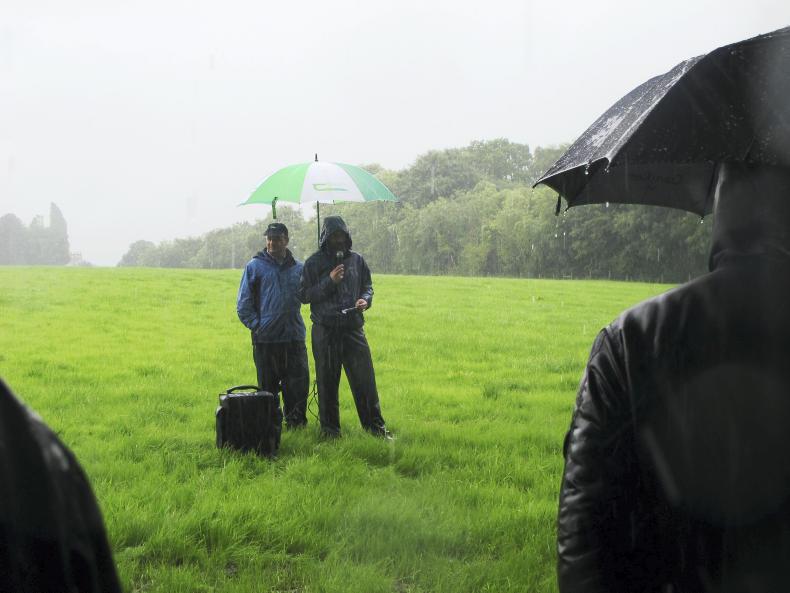
The farm walk continued despite heavy rain.
The targets set for John is simple – to increase his gross margin from €580/ha to €950/ha. He aims to do this by increasing his stocking rate to 10 ewes/ha, aided by improved grassland management.
Since joining the BETTER farm programme in 2014, John has made huge strides in that respect.
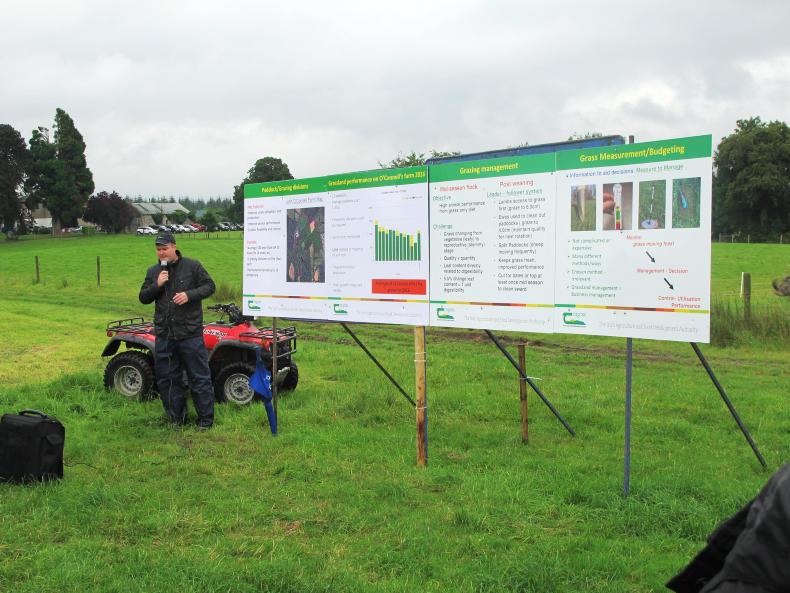
Teagasc’s Philip Creighton explains the grassland management used on John’s farm.
Gross margin was at €350 and the grazing platform only had eight divisions. That has since risen to 12, that can be further subdivided to 24 with temporary electric fencing. There is a huge emphasis on growing and utilising grass on the farm, to finish as many lambs off a grass-only diet as possible.
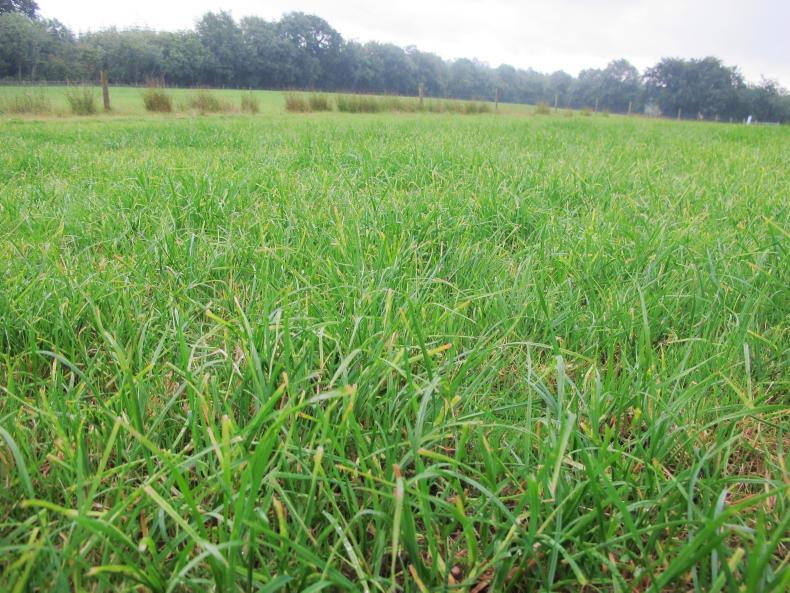
Some fresh silage aftergrass that lambs will be entering soon.
John measures his grass weekly and records the figures in PastureBase. This allows him to make decisions on how much grass sheep need to be allocated and, as he said himself, “you can’t manage it if you don’t measure it”. To date, the farm has grown 30% more grass than at the same point last year.
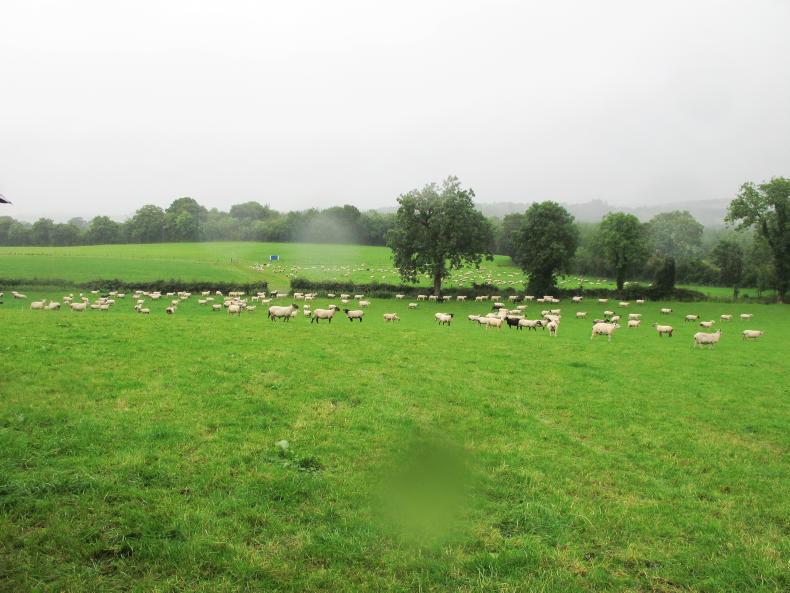
John has a leader-follower system, where lambs graze to 6cm before weaned ewes clean paddocks to 4cm.
He also aims to cut silage from every paddock at least once in the year, as well as regular fertiliser application when necessary. All paddocks received ¾ of a bag of urea on 10 February, one bag of 18-6-12 after grazing and ¾ of a bag of urea, plus slurry once silage is cut from the paddock.
John has also made adjustments to his flock. The ewes are Belclare-Suffolk crosses that are bred to Belcare, Suffolk, Texel and Blue de Maine rams. Lambing of the ewes commences on 10 March and the ewe lambs on 20 March.
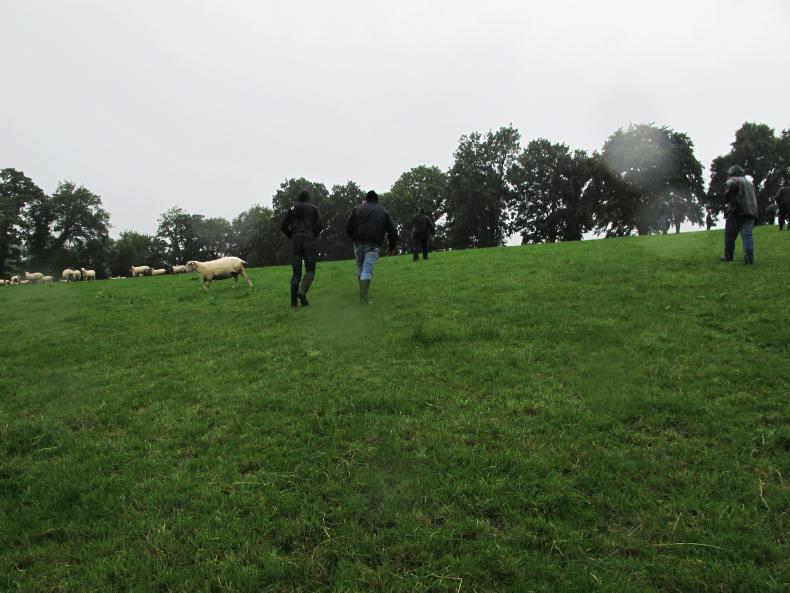
One of John’s ewes attempts to join the farm walk to find out more about her future.
John breeds his own replacements and these are selected from the ewes bred to the Suffolk and Belclare ewes. Any sheep with issues, such as lameness, prolapses or mastitis, etc, are put to the Texel ram to bread terminal progeny. The ewe lambs are bred to the Blue de Maine ram to make lambing easier, once they achieve the target minimum weight of 45kg at mating.
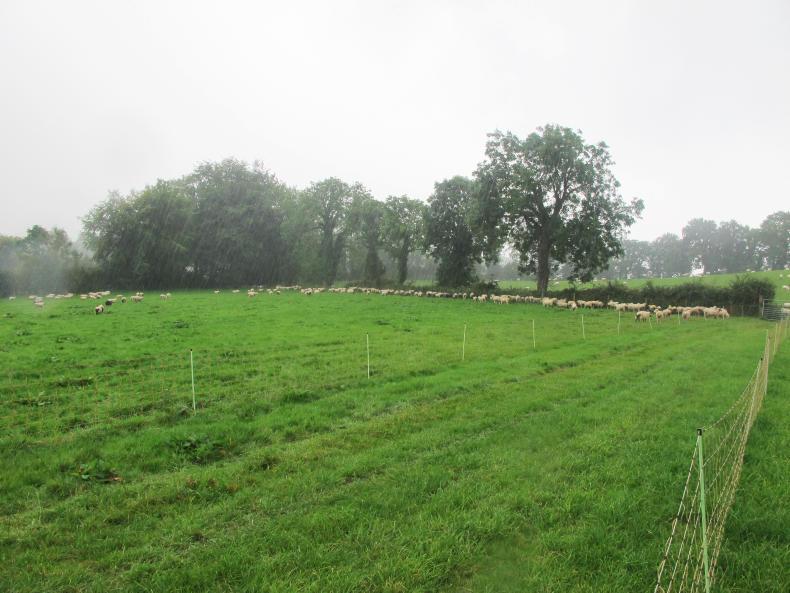
John’s lambs take shelther from the rain beside temporary fencing used.
This has allowed John to increase the number of lambs reared per ewe to 1.6.
So despite the wet weather on the day, the messages delivered on the farm walk were in no way watered down. It is possible to grow grass on marginal land to achieve a high output.
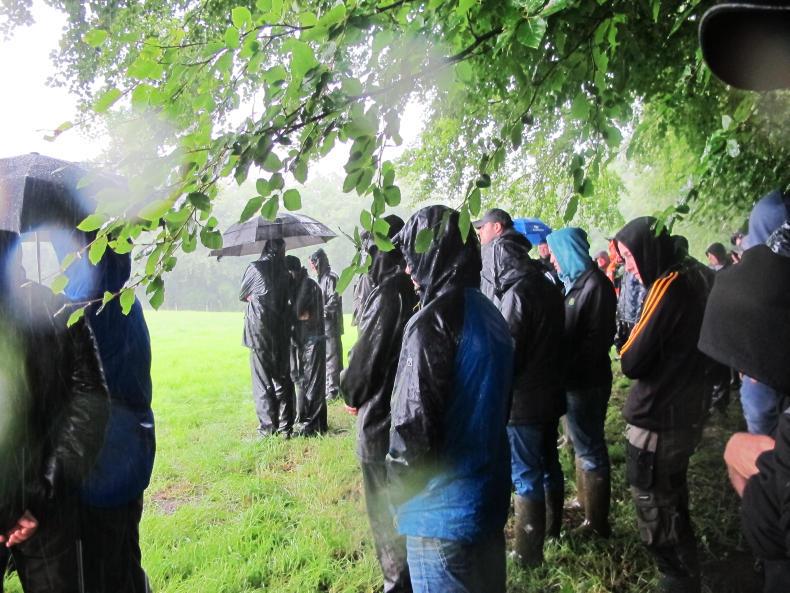
Taking shelter from the rain.
Read more
Sheep farming: reduce the workload on the human body
Sheep trends: factories struggle to pull lamb prices
On Wednesday, as part of the BETTER farm lowland sheep walks, Barry Cassidy went along to John’s farm walk to see how he is achieving this level of growth. Despite the wet weather, a large crowd turned out to do likewise.

The farm walk continued despite heavy rain.
The targets set for John is simple – to increase his gross margin from €580/ha to €950/ha. He aims to do this by increasing his stocking rate to 10 ewes/ha, aided by improved grassland management.
Since joining the BETTER farm programme in 2014, John has made huge strides in that respect.

Teagasc’s Philip Creighton explains the grassland management used on John’s farm.
Gross margin was at €350 and the grazing platform only had eight divisions. That has since risen to 12, that can be further subdivided to 24 with temporary electric fencing. There is a huge emphasis on growing and utilising grass on the farm, to finish as many lambs off a grass-only diet as possible.

Some fresh silage aftergrass that lambs will be entering soon.
John measures his grass weekly and records the figures in PastureBase. This allows him to make decisions on how much grass sheep need to be allocated and, as he said himself, “you can’t manage it if you don’t measure it”. To date, the farm has grown 30% more grass than at the same point last year.

John has a leader-follower system, where lambs graze to 6cm before weaned ewes clean paddocks to 4cm.
He also aims to cut silage from every paddock at least once in the year, as well as regular fertiliser application when necessary. All paddocks received ¾ of a bag of urea on 10 February, one bag of 18-6-12 after grazing and ¾ of a bag of urea, plus slurry once silage is cut from the paddock.
John has also made adjustments to his flock. The ewes are Belclare-Suffolk crosses that are bred to Belcare, Suffolk, Texel and Blue de Maine rams. Lambing of the ewes commences on 10 March and the ewe lambs on 20 March.

One of John’s ewes attempts to join the farm walk to find out more about her future.
John breeds his own replacements and these are selected from the ewes bred to the Suffolk and Belclare ewes. Any sheep with issues, such as lameness, prolapses or mastitis, etc, are put to the Texel ram to bread terminal progeny. The ewe lambs are bred to the Blue de Maine ram to make lambing easier, once they achieve the target minimum weight of 45kg at mating.

John’s lambs take shelther from the rain beside temporary fencing used.
This has allowed John to increase the number of lambs reared per ewe to 1.6.
So despite the wet weather on the day, the messages delivered on the farm walk were in no way watered down. It is possible to grow grass on marginal land to achieve a high output.

Taking shelter from the rain.
Read more
Sheep farming: reduce the workload on the human body
Sheep trends: factories struggle to pull lamb prices








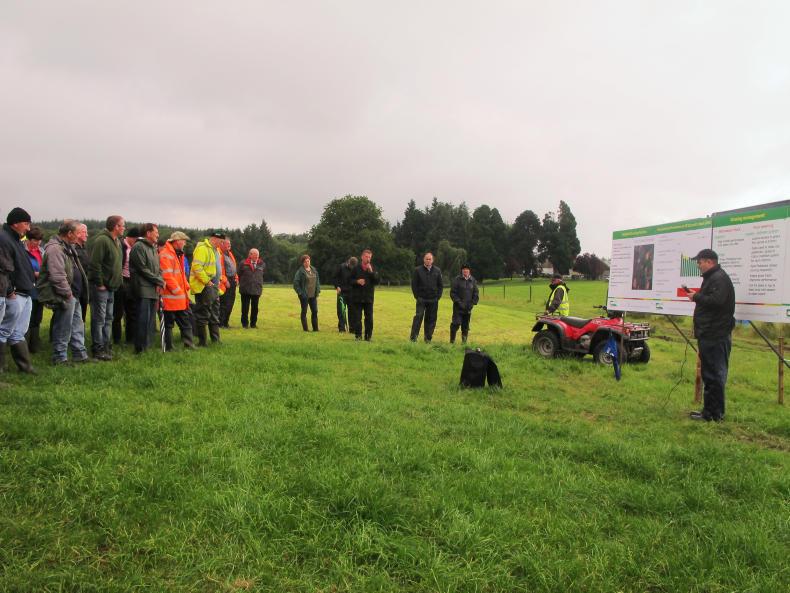




 This is a subscriber-only article
This is a subscriber-only article
















SHARING OPTIONS: